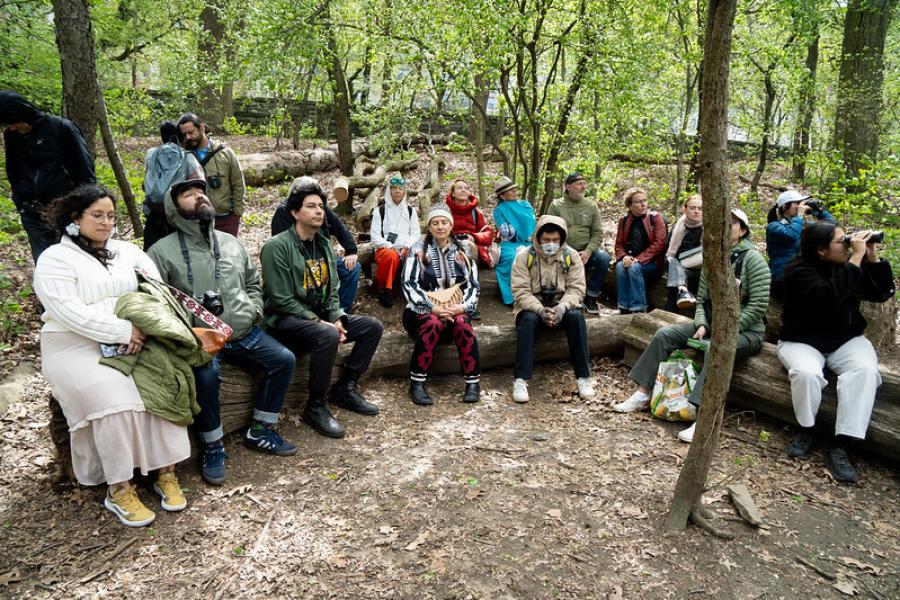Every society has rituals that serve important functions for its members. Rituals dramatically communicate cultural values and ideals, such as the difference between right and wrong, and good and bad. Rituals may mark such significant events during the life cycle as birth, marriage, and death. They may emphasize the importance of adult maturity through rites of passage. Rituals also act as events which help individuals reaffirm their group membership - their collective identity.
As indigenous populations strive to preserve their cultural uniqueness and right to survive, it becomes critically important for them to clearly define how they differ from other peoples, especially those with whom they are in direct contact. Rituals of ethnic identity help to differentiate cultural groups. By emphasizing specific traditions, they announce ethnic differences to non-indigenous persons. They solidify feelings of pride, unique identity, and shared purpose within the native society as well.
Rituals of ethnic identity are now significant for the Inupiat of north Alaska. Currently, this group of Native Americans seeks to assert and preserve its cultural uniqueness in the midst of intense industrialization of its Arctic homeland. One ritual of Inupiat ethnic identity involves native dance and its accompanying music.
On special occasions, such as Christmas night and Thanksgiving, much of the community's native population gathers in a large room, such as a school gymnasium. They sit or stand against three walls leaving the main floor area clear. In a row along the fourth wall sit about twelve men with their tambourine-like drums, approximately two feet in diameter. Behind them sits a row of women singers. Each dance lasts several minutes and begins with a soft introductory chant. Then the drummers add to the singing their loud heavy beats, while the dancers perform.
Anyone from the audience may perform and the composition of each group of dancers changes as some persons step forward onto the floor while others take their seats. The number of dancers during any particular dance varies from one to perhaps fifteen. However, during the climactic last few dances of the evening many more people participate.
One leading Inupiat dancer and musician strongly emphasizes that native drumming and dancing have nothing to do with shamanism. He says that many whites think the musical event portrays the performance of a shaman. This individual insists that Inupiat music and dance serve only to entertain and provide enjoyment for all who attend. The dances do not deliberately depict particular scenes or activities, nor do they tell a story, he says. Although some songs contain actual words in the Inupiat language, most are comprised of meaningless syllables.
The manifest function of Inupiat dance and musical performances does seem to be entertainment for the community. However, their latent function involves the assertion of ethnic identity.
Even though the circumpolar tambourine has a long history of close association with shamanism, the denial of this relationship helps define the religious convictions of many Inupiat. Today they consider themselves to be Christian, and simultaneously "Inupiat." To admit that their native music has much of its roots in shamanism would represent to many people a rejection of Christianity and modernity.
Instead, current Inupiat music and dance have become redefined supposedly in purely secular terms: They just entertain. Accordingly, an elderly man teaches Inupiat music and dance in the public schools of Barrow, the regional center of Arctic Alaska. Most students seem to enjoy his lessons and are very interested in learning these traditional skills. Reciprocally, this man derives a considerable amount of satisfaction from transmitting his musical and dance knowledge to young people at a time when ritualizing their ethnic identity is so important.
While some of it was shamanistic in the past, Inupiat music always had an entertainment component. The modern denial of its religious aspect and its simultaneous secularization provide a means of displaying current cultural identity and uniqueness.
Now Christmas acts as a major event calling for native dance performance. Yet, these performances do not occur in church or as part of the formal white Christian celebration of the holiday. They take place in a non-religious building, a school gymnasium, at night, after Christmas has been celebrated earlier in church. By grafting their native music and dance together with the celebration time of Christmas, the Inupiat preserve the psychological and cultural relationships between their experience of religion and its outward social expression. Also, the Inupiat preserve a ritualized emblem of ethnic uniqueness that helps solidify their group during a period of intense culture contact and regional change.
Article copyright Cultural Survival, Inc.



